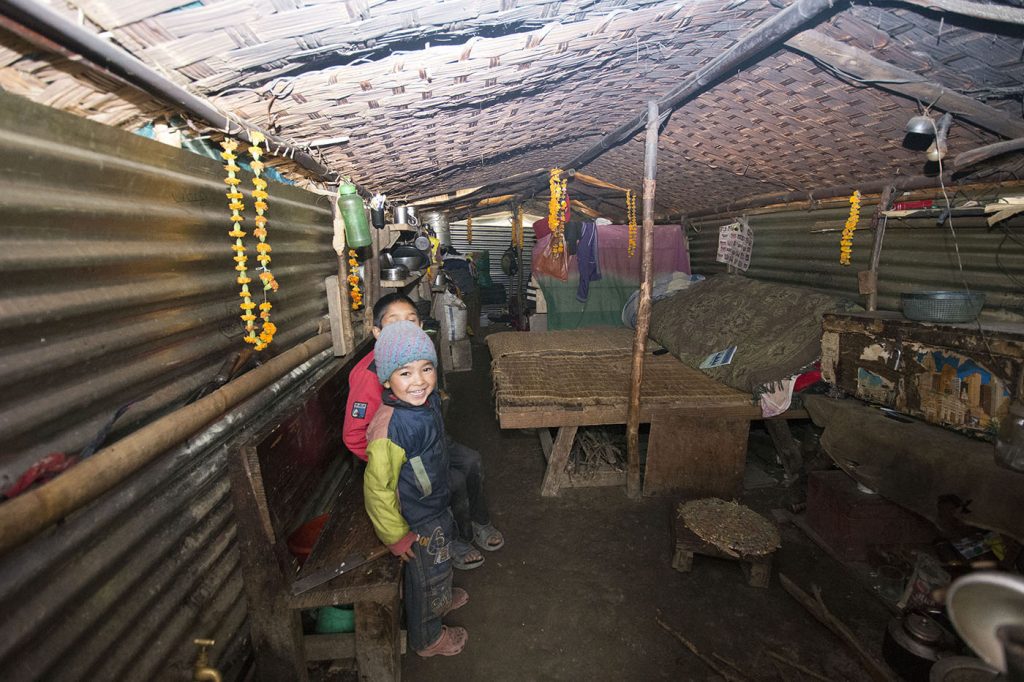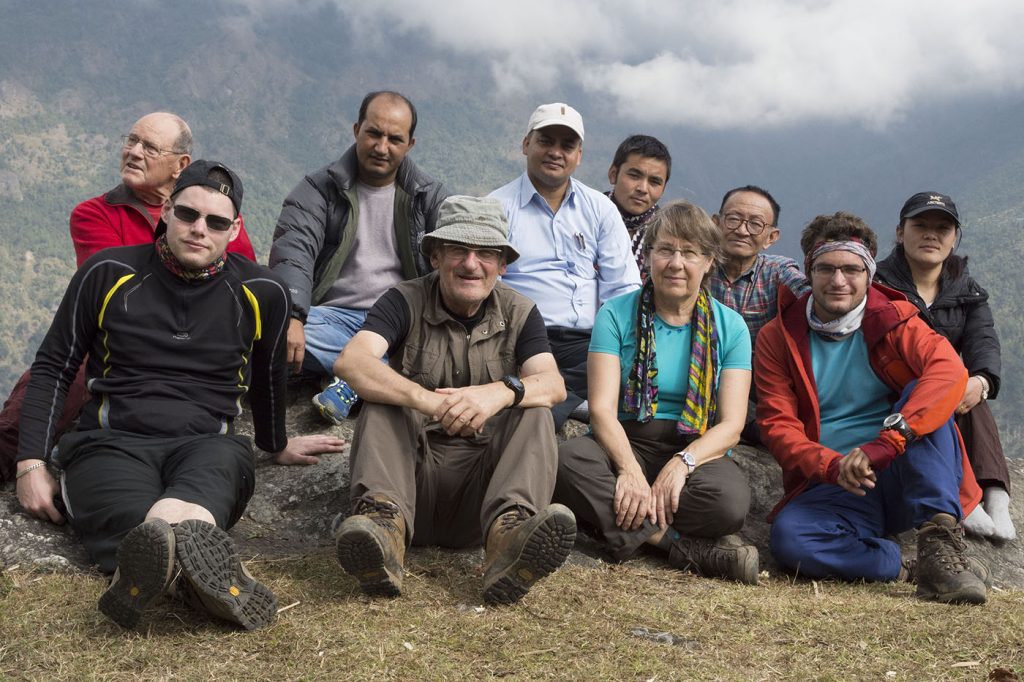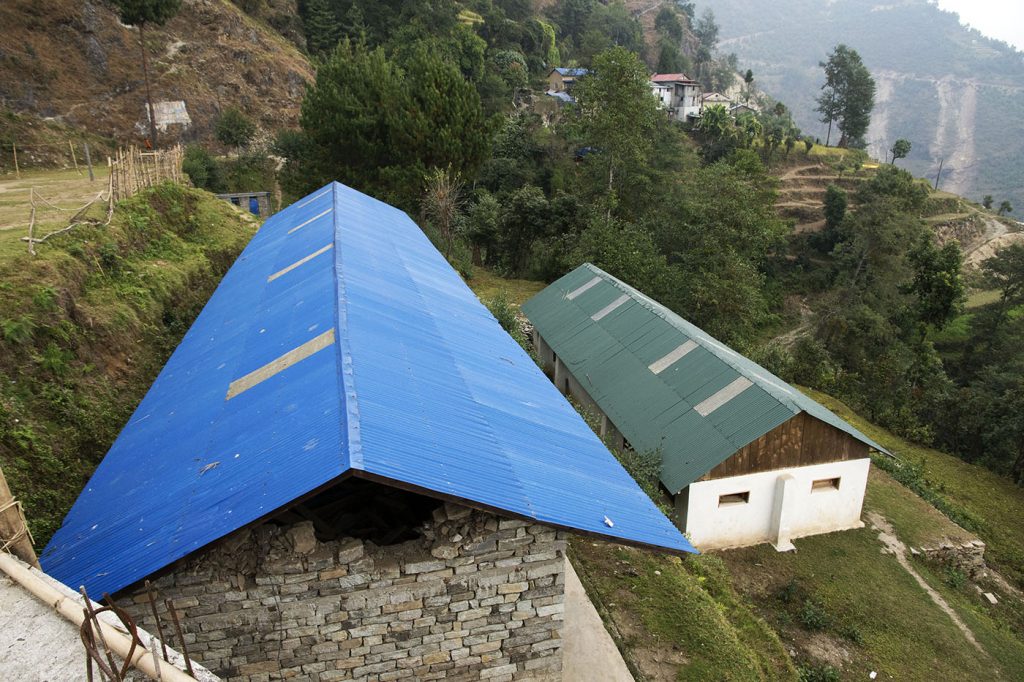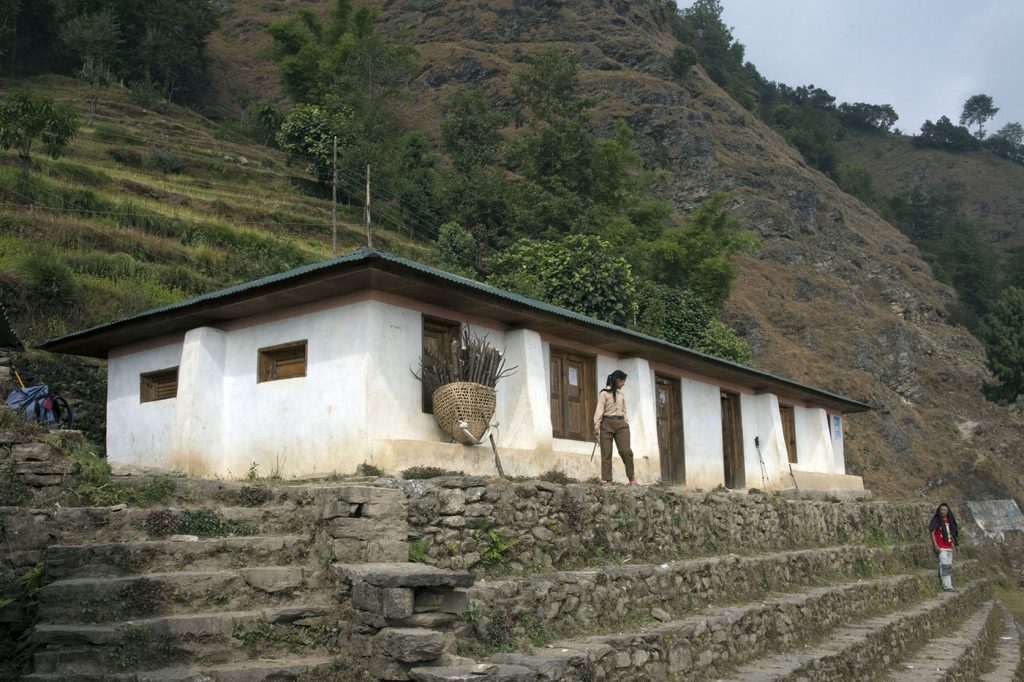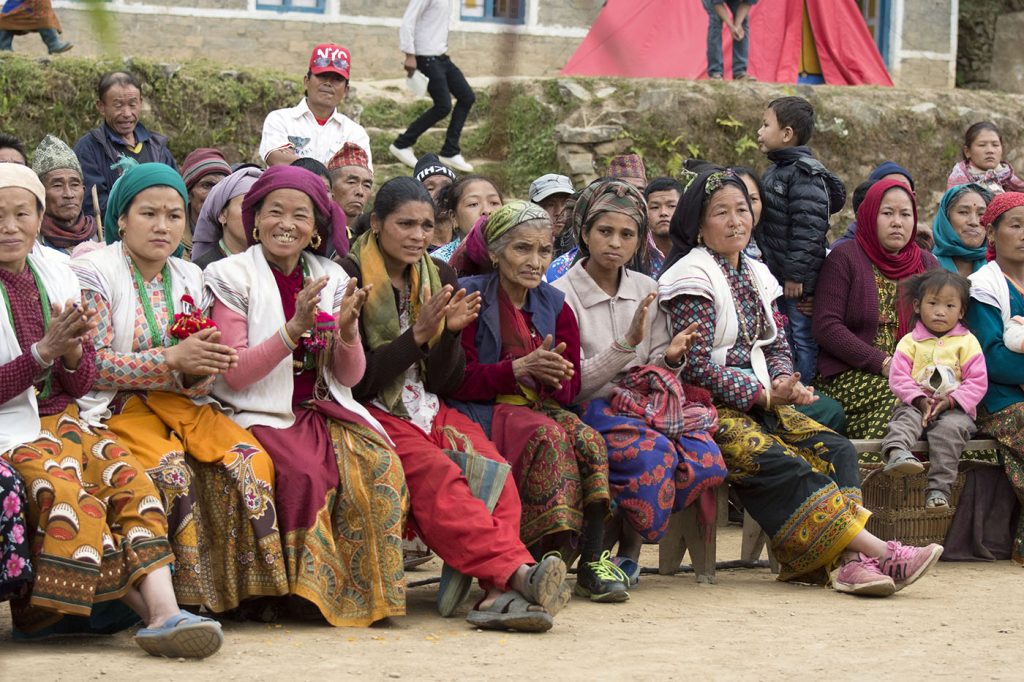They have only received one tenth of the promised government aid, with little hope of receiving the rest. Clientelism, obscure channels for distributing public funds and political unrest following the introduction of the new constitution are not making things any easier.
On the basis of all these factors, we have selected three techniques for the walls: dry stone with wooden chains, dry stone enclosed in wire mesh (gabions), and earthbags. Sheet metal will be used for the roofs.
We are going to integrate the smoke evacuation chimneys on the outside, a project we already had before the earthquakes.
We are going to start building 3 houses of 20 m² in each technique (i.e. 9 houses) that will serve as training sites for local craftsmen and as show homes. Residents will be able to choose between the three types of construction, the prices being roughly equivalent (around €2,000); they will contribute their share of the transport of materials and their time in a spirit of solidarity and reciprocity.
Our current funds will enable us to build a few more houses so that the 10 to 15 neediest families, chosen by the Village Committee, can have a home as soon as possible.
Our warmest thanks to all our donors and participants.
Other members of the association will be visiting the village in April 2016, on the way to Méra Peak, to take stock of the situation; it is important to show the people of Rapcha that they have not been forgotten and that the treks on these magnificent paths, which are essential for them, are continuing despite the events.


